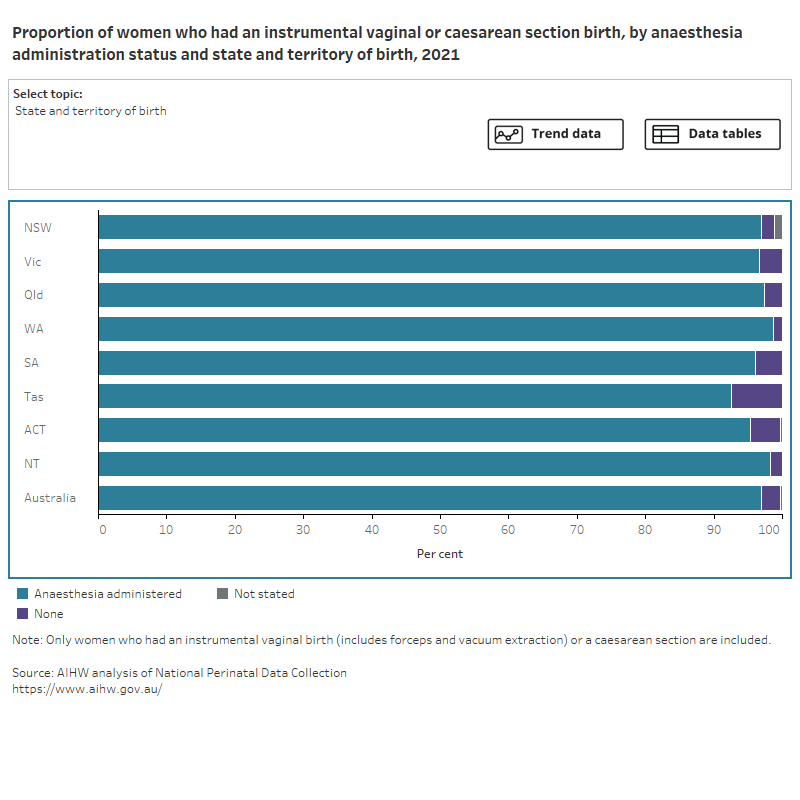Anaesthesia
Anaesthesia is used to relieve pain during a caesarean section or instrumental vaginal birth. All women who have a caesarean section receive anaesthesia, except in the rare case of post-mortem delivery. More than one type of anaesthetic can be administered.
In 2021, most mothers who had a caesarean section had a regional anaesthetic (70% spinal, 19% epidural or caudal; noting that some mothers had both) and 5.3% had a general anaesthetic.
Figure 1 presents data on the anaesthesia administration status of women who gave birth and had a caesarean section or instrumental vaginal birth, by selected maternal characteristics, for 2021. Select the trend button to see how data has changed over an 11-year period (where available).
Figure 1: Proportion of women who had an instrumental vaginal or caesarean section birth, by anaesthesia administration status and selected topic
Bar chart shows anaesthesia administration status by selected topics and a line graph shows topic trends between 2011 and 2021.

Most mothers who had an instrumental vaginal birth had an anaesthetic. A regional anaesthetic was most common (66% epidural or caudal and 3.8% spinal), followed by a local anaesthetic to the perineum (21%).
Women who had a vaginal instrumental birth using forceps (95%) were more likely to have anaesthesia administered than women who had a vacuum extraction (88%).
For related information see National Core Maternity Indicator General anaesthetic for women giving birth by caesarean section
For more information on anaesthesia see National Perinatal Data Collection annual update data tables 2.31, 2.32 and 2.33.


